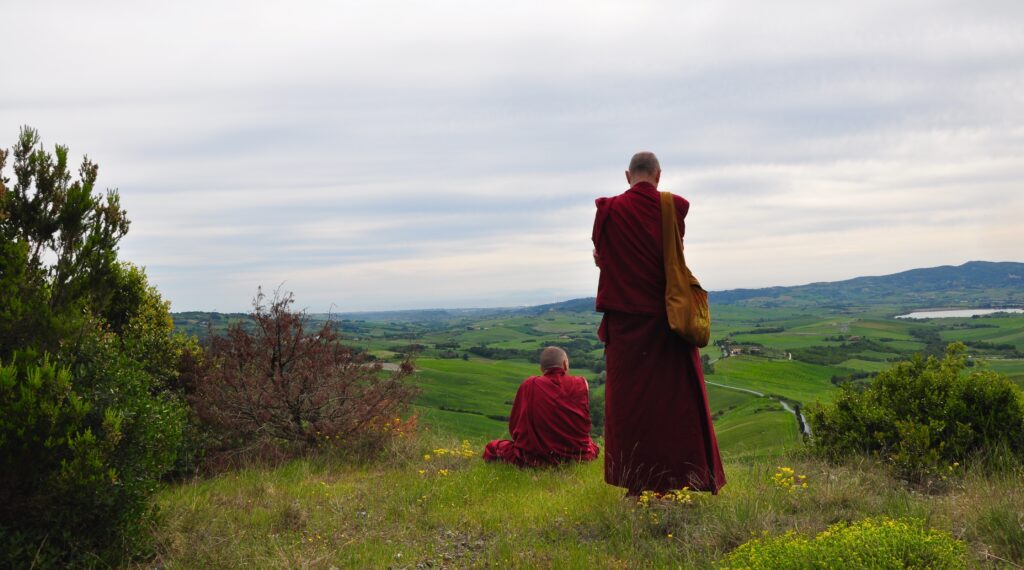
On the occasion of National Tree Day*, on November 21, 2021, we take the opportunity to tell you about the project "BioRemediation & MindRemediation" which has as its objective the environmental and naturalistic recovery of the Monastery area.
We asked for a contribution from Eng. Gianluigi Pirrera, who has been in charge of the project since 2007.
“November 21 is celebrating respect for and safeguarding our planet, and that is why planting a tree is a significant action, especially for the new generations, who generally have a greater understanding of the risks of Climate Change.
Planting a tree means planting it with the right exposure, in the right period, with the right climatic weather conditions and in places where it can feel at home because it is familiar to it.
This is what we must always have in mind when planting a tree. When, to say it correctly, we “plant it”, that is, in its house, with the right foundations, or the soil, to nourish its roots.
One of the founding principles of the Sangha Onlus Contemplation Park is to create the conditions for planting trees. To have over time a vegetation similar to that of the surrounding Tuscan Mediterranean scrub.
But it is a former quarry, where man extracted first the gabriccio (the gray-green rocks) and then the vegetation, which like a blanket protected the soil from erosion and which retained water and developed oxygen. Due to the scarce vegetation, we have therefore found a degraded, exposed and weak environment, to be re-naturalized by having to regenerate the soils starting from herbaceous species and shrubs.
A vegetational path
Like the paths, even the paths we are regenerating, thanks to a small but ambitious project financed by UBI (the Italian Buddhist Union) and by the Sangha Onlus Association itself, will benefit the monastic community and for the enjoyment of visitors.
The paths will have informative and directional signs. They will enter the future monastic area by first crossing relict portions of the original historic wood still intact, marked by traces of the traditions of the charcoal burners along the Riseccoli cave. Then they will go up again, discovering corners of great interest until they enter directly into the full quarry, where the vegetation has much more difficulty in taking root because it is almost completely devoid of soil.
Let's see which are the most important species
The indigenous species are fundamental for the quarry recovery strategy we are building:
The Alyssus, Alyssum bertolonii the scientific name of the typically Tuscan species, a very useful plant, very protective and regenerating for the soil. The cysts and many fragrant shrubs that perfume the path, such as: junipers, hawthorn, strawberry tree, myrtle and laurel.
We are harvesting the seeds of the place so that they are easier to germinate, making them new plants. As a kind of regeneration, renaturalization, cathartic. With the help also of traditional naturalistic engineering actions and reusing the stones and branches that storms and storms have broken. This is also a regeneration: that of plant waste that comes back to life along the paths.
Circular economy, according to the dictates of the Green economy, and also innovative actions, for the first interventions with the “seed balls”, ie balls of seeds mixed with the earth, left there in the bare escarpments until they find the optimal natural climatic conditions to germinate.
Slow recovery approaches inspired by the times of nature
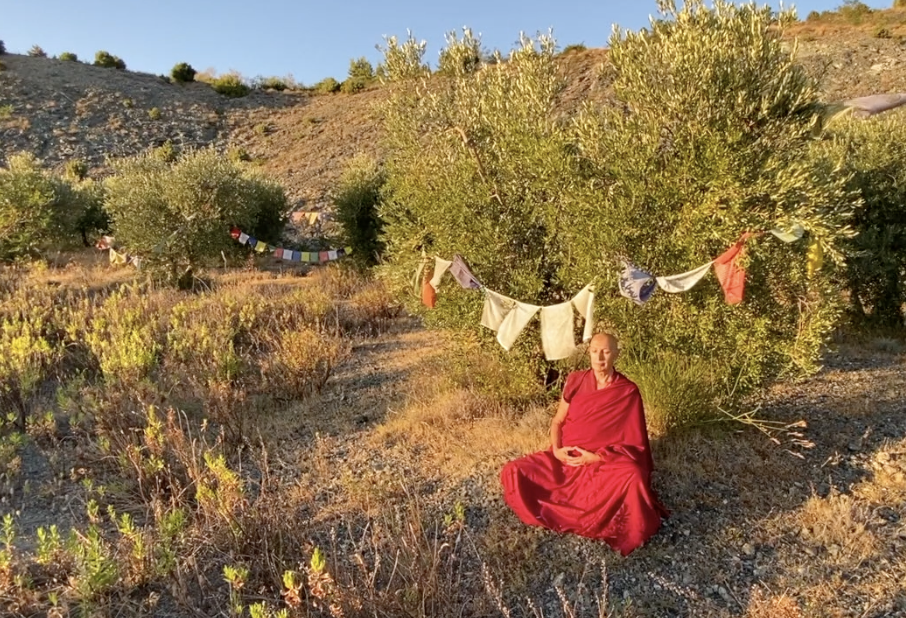
The approaches chosen for the project (which we could define anthroposophical according to European readings) were inspired by the Japanese philosopher and biologist Fukuoka.
They are slow, because nature needs slow times: soil, seeds, herbs, shrubs and then trees, up to the wood when the completion of the vegetation series with the original oaks is reached.
Three years is the expected time for the works. Too many? In fact, 3 months would be enough to perform them, but it would take 36 (months) to have 12 seasons, and allow time for the seeds to mature, and for the plants to acclimate according to the rhythms of nature.
These approaches in the Contemplation Park could not be different. Of course, in some cases, we will plant already large plants purchased from local nurseries but the seeds from the site itself are more important to us.
Indeed His Holiness the Dalai Lama, during the visit in June 2014, he planted the myrtle seeds with the help of some children. These seeds have now grown into well-formed plants. A blessing for the site and for the success of the works started this September.
Also a great omen was the planting, just in September, of some "seed balls" by Tenzin Osel Hita, who appreciated the experimentation so much, and now this technique has become part of one of the programs of his network Global Tree Initiative
The path of the paths, of the Renaturalization to plant trees continues day after day. Sunday, National Tree Day marks the first year of interventions for the Contemplation Park. We will spend two more, for the seeds and plants to grow. Natural".
Article edited of Eng. Gianluigi Pirrera, project leader for Pathways and First interventions of “BioRemediation & MindRemediation” in the Contemplation Park for the Sangha Onlus Association, Pomaia.
-
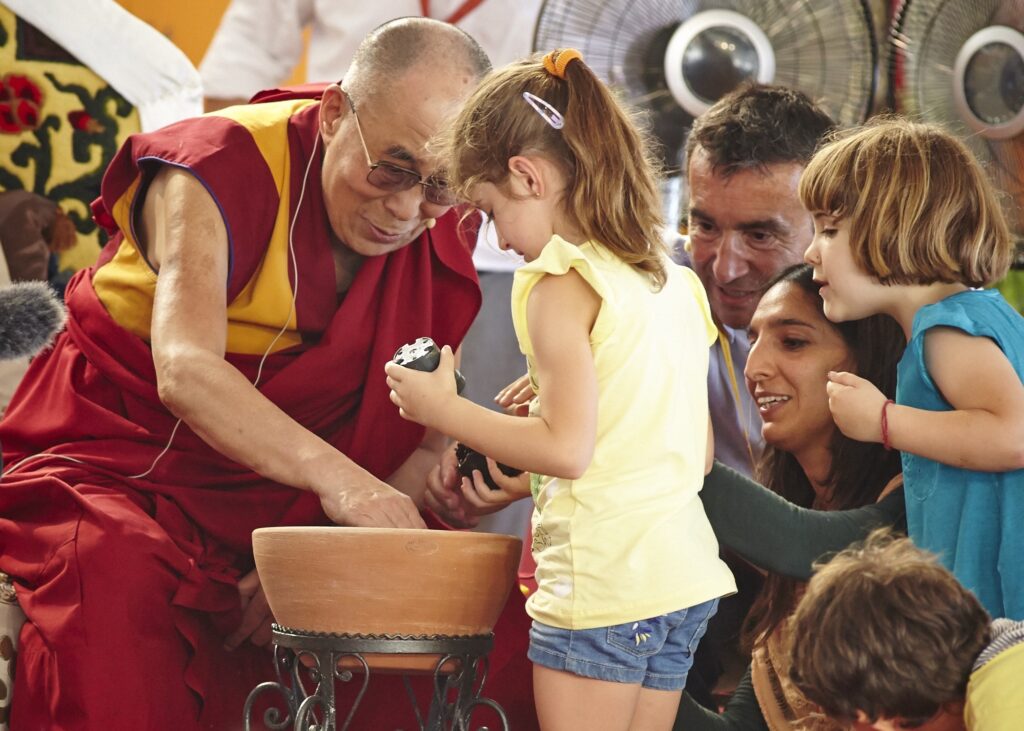
His Holiness the Dalai Lama plants myrtle seeds, Pomaia - June 2014 -

View of the Hill with tree species -
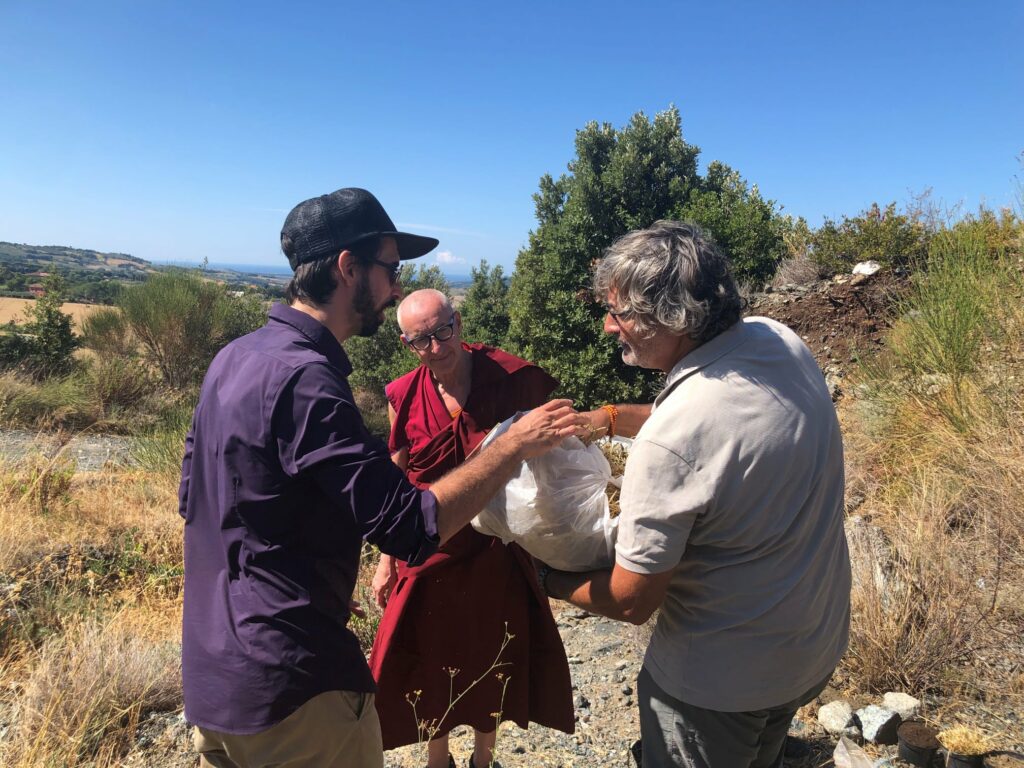
Tenzin Ösel Hita, Ven. Massimo Stordi and Ing. Gianluigi Pirrera, plant the "seed balls" - September 2021 -
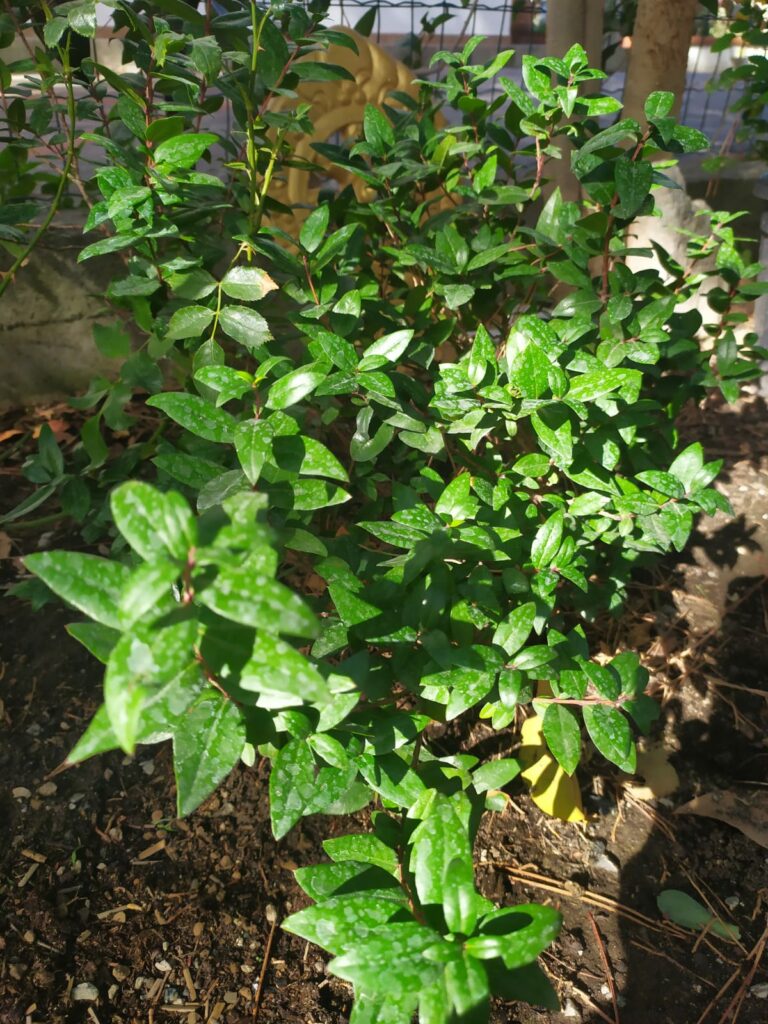
The Myrtle plant sown by His Holiness in 2014 -
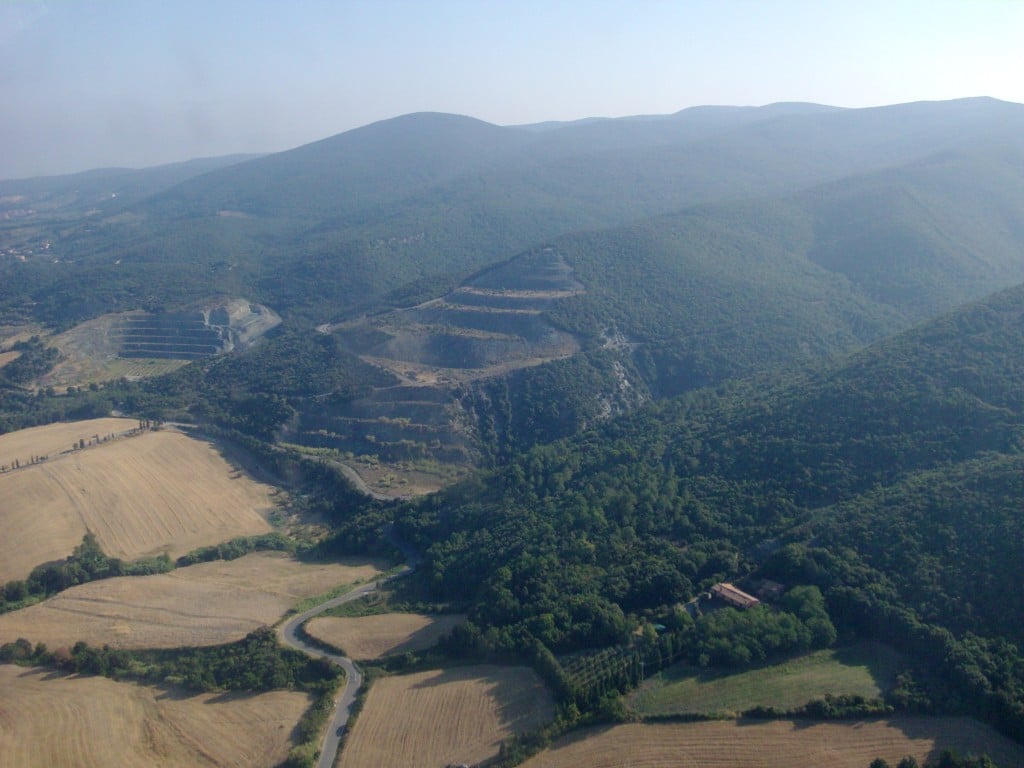
Aerial photo of the quarry -
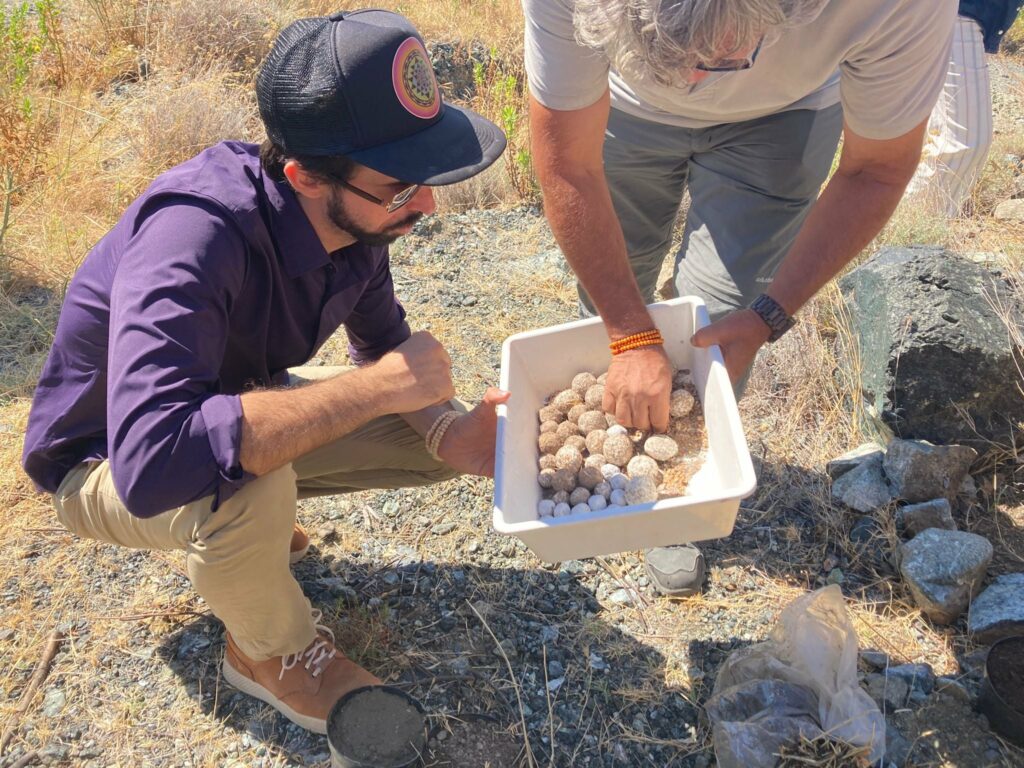
Tenzin Ösel Hita, Ven. Massimo Stordi and Ing. Gianluigi Pirrera, plant the "seeds balls" - September 2021
* Established in 2013 (Law n.10 of 14/01/2013) with the aim of enhancing and protecting the environment, the trees and woods, to reduce emissions, protect the soil from hydrogeological instability and improve quality of the air, the enhancement of the traditions linked to the tree in Italian culture and the livability of urban settlements.
